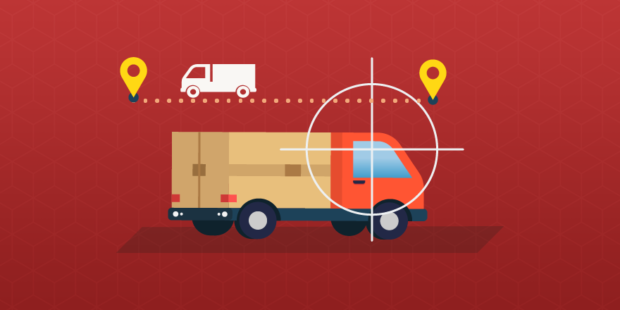Two Essential Tools for Fleet Industries: Management Software and Dashboard Cameras
What is Fleet Management Software?
A fleet management software is an application that allows fleet managers to monitor all data or information involved in a fleet of vehicles which in turn allows managers to effectively manage tasks and come up with strategies to increase productivity. Nowadays, these softwares are highly comprehensive and customizable, so you can manage and automate almost every function from start to finish.


Functions of a Fleet Management Software
The primary functions of this software is to collect and store data, monitor drivers and their driving practices, manage risk, as well as use the collected data on fuel consumed, fuel purchased, and distance travelled overall and within state borders in order to generate accurate IFTA reports for tax filing purposes. There are also many other things recorded in the database which fleet managers can review to gain insight on their fleet and come up with effective ways to reduce cost and increase productivity.
Some of the functions of Fleet software are:
Management of Fleet Vehicles
By using fleet management software, fleet owners are able to manage various vehicle, inventory, cost, maintenance, and compliance related processes.
Some of these include:
- Vehicle licensing and registration
- Inventory management
- Vehicle procurement and disposal
- Schedule vehicle maintenance and repair
- Renewing insurance for vehicles
- Renewing fleet drivers’ medical certification
- Analysing cost
Driver Monitoring and Management
- Monitor driving behaviour
- Identifying and correcting risky driving practices
- Remotely coach drivers
- Ensure safety regulations and compliance
- Logging events for training purposes
Managing Incidents
- Provide proof of accidents or other incidents
- Provide proof of theft or vehicle tampering
- Provide proof of location and time of delivery for payment purposes (need for those cases where clients are falsing staging queries for discounted services, and to find out if a driver is lying about timely deliveries)
Fleet Tracking
- Telematics (this is integration of telecommunications and vehicle technology for Fleet Management and other purposes)
- Planning and optimizing routes (You are given information on road work or road-blocks which will require you to reroute beforehand, which saves time and fuel expenses)
- Electronic logging of distances travelled, fuel purchased, fuel used, and driver’s ‘hours of service’ (for tax reporting and compliance)
- Preventive maintenance alerts for scheduling vehicle repair or service
- General alerts and relay of information
Where can I get a Fleet Management Software?
Fleet management services can either be designed and created by the carrier or fleet company intended on using it. But, another cheaper and much quicker way of gaining access to a fleet software is by licensing or buying the software from a fleet service provider. Depending on the functionality and the overall comprehensiveness, these systems can vary in cost.
Another essential part of the Fleet industry are dashboard cameras. Let’s look at the importance and benefits of installing dashboard cameras in your fleet.
The Importance of Dash Cameras in Fleet Management
The benefits of installing dash cameras in fleets has been gaining lots of attention among fleet owners over the past decade, especially with the introduction of new compliance and fleet regulations. Being able to track and record everything that goes on outside and inside your truck brings about many benefits to fleet drivers and companies.
Here are some of the main benefits of using a truck dash cam:
Video Footage of Accidents
The main reason fleets install dash camera systems is to be able to get video footage if any accident occurs. Video footage is considered as subjective evidence and holds the most value when it comes to proving your innocence or exonerating a driver. Without this it will be very hard to prove whose fault it is and deal with insurance claims. A point to remember is that if an accident is your fault, providing footage for the same will work against your favor and affect your chance of getting insurance.
Protection against Insurance Fraud from Staged Collisions
There are people always looking to claim insurance through fraudulent ways. In Fleet, this is done by what is known as a ‘staged collision’. As the name suggests, this is when a driver purposely collides with another truck in order to get both insurance policies involved and claim insurance money. Video footage again comes to the rescue and helps prove your innocence if you are involved in a staged collision.
Recording off-duty
Even if your engine is switched off or if the truck is parked at a lay-bye without the driver present, recording continues. This way there is 24/7 recording and you are able to guarantee some form of security again vandals or thieves even if there is no one present in the truck. Most theft or vandalism occurs after the sun goes down, so make sure that you get a dash cam with night-vision recording, and preferably a wide angle camera.
Remotely Train Fleet Drivers
Another beneficial aspect of dash cams is that it allows trainers to remotely train new truck drivers as well as seasoned ones. With dash cameras a trainer can sit at home or in the office and see what the driver can see as well as what they cannot. Being able to monitor drivers like this allows trainers to point out good and bad driving practices. This also saves cost and time as the trainer doesn’t have to physically be seated in the passenger seat.
Looking to Purchase a Truck Dash Cam?
If you are looking to purchase dash cameras for trucks, here are a few things to consider.
Dash camera and tracking system packages can vary greatly as they are equipment based. It is advisable to go for something a little more high-end, and offers wide angle and night-time recording cameras. Make sure you get a system with accelerometers, tracking and logging functionality, and built-in microphones and inward facing cameras.